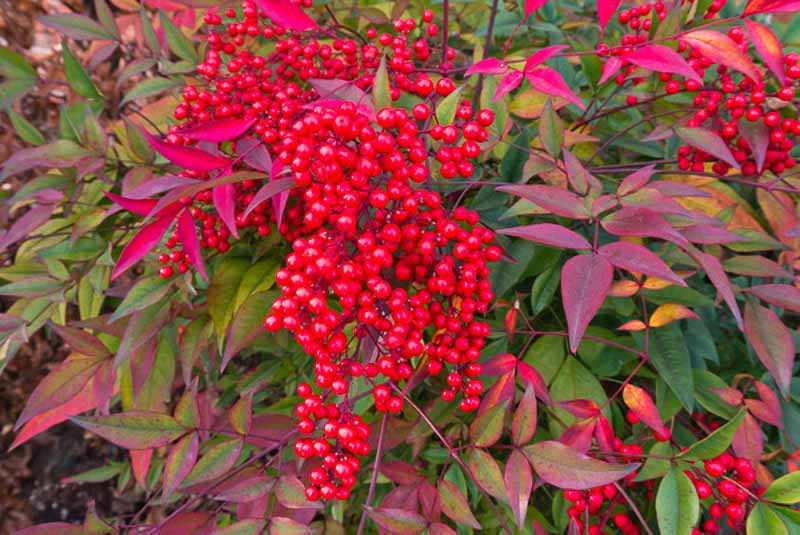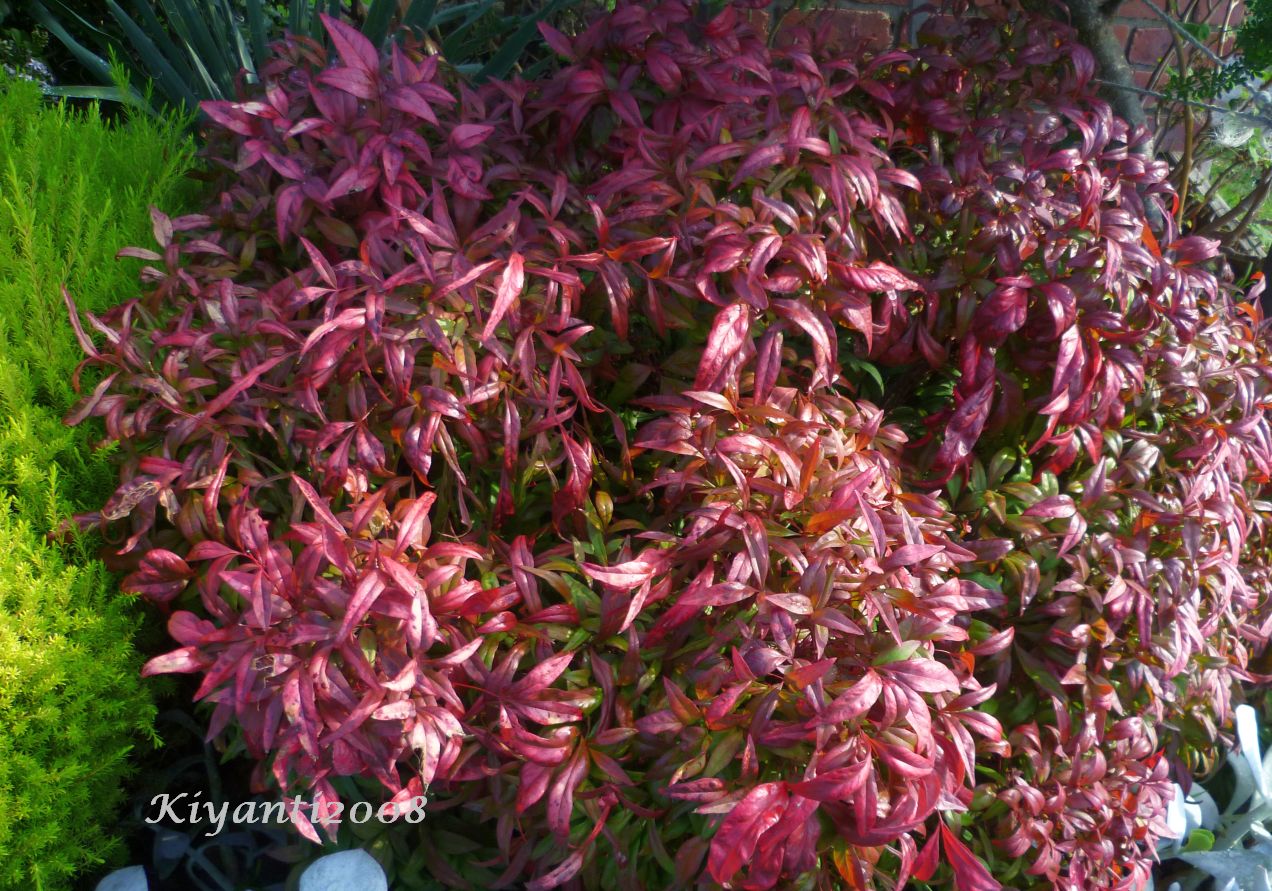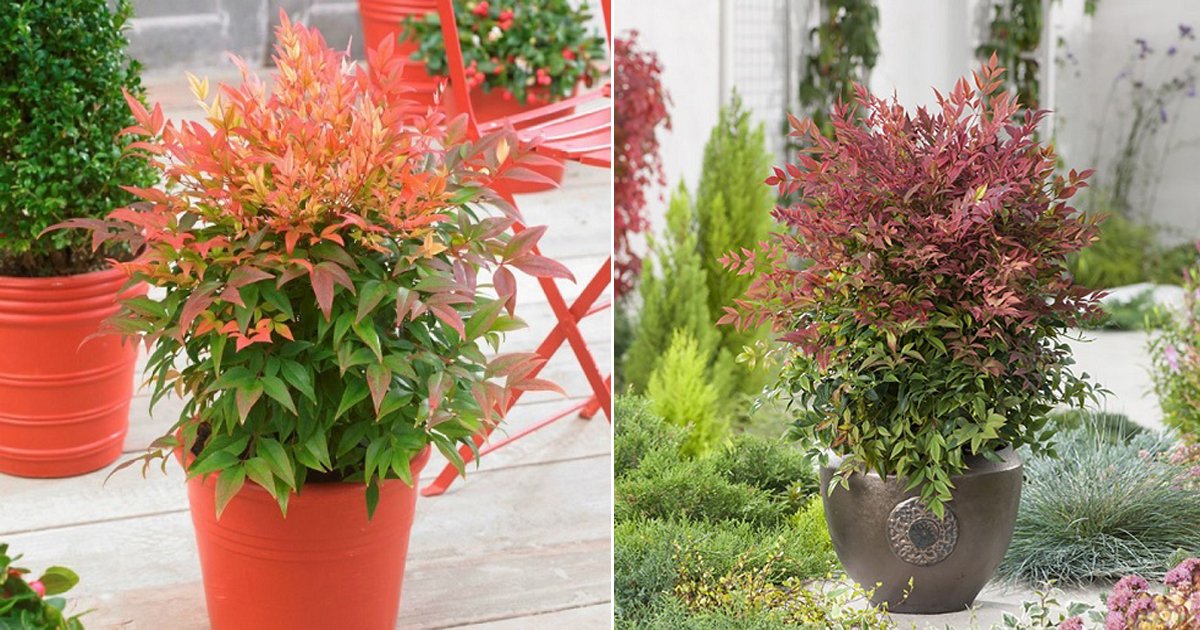Nandina Domestica: The Plant That Has Me Obsessed
Nandina Domestica: The Plant That Has Me Obsessed
I've always been a plant lover, but there's one plant that has me particularly obsessed: Nandina domestica, also known as heavenly bamboo. This versatile shrub is known for its beautiful foliage, which can range in color from bright green to deep red, depending on the variety. Nandina is also relatively easy to care for, making it a great choice for even the most novice gardener.
I first fell in love with Nandina when I saw it growing in a friend's garden. The delicate, fern-like leaves and vibrant red berries were so eye-catching, I knew I had to have one of my own. I did some research and found a variety that was hardy in my climate, and I planted it in my backyard.
Nandina has been a joy to have in my garden ever since. It's a low-maintenance plant that requires very little water or fertilizer. It also tolerates a wide range of soil conditions, so I don't have to worry about it getting too dry or too wet.
Nandina is a beautiful plant that adds interest to my garden all year round. In the spring, it produces clusters of small, white flowers that are pollinated by bees and other insects. In the fall, the leaves turn a brilliant red color, which provides a welcome splash of color in the otherwise muted landscape. And in the winter, the red berries persist, providing food for birds and other wildlife.
In addition to its beauty, Nandina also has a number of practical benefits. It can be used as a hedge, a screen, or a specimen plant. It's also deer-resistant, so you don't have to worry about your plants being eaten by hungry animals.
If you're looking for a beautiful, low-maintenance plant to add to your garden, I highly recommend Nandina domestica. It's a versatile plant that can be used in a variety of ways, and it's sure to add a touch of elegance to your outdoor space.
[Main Content]
Here are some additional information about Nandina domestica:
- Nandina is native to eastern Asia, from the Himalayas to Japan.
- It is a slow-growing shrub that can reach a height of 6 to 8 feet.
- Nandina is evergreen in most climates, but it may lose some of its leaves in cold winters.
- The leaves are arranged in opposite pairs and are deeply lobed.
- The flowers are small and white and are borne in clusters in the spring.
- The berries are red and ripen in the fall.
- Nandina is a hardy plant that can tolerate a wide range of temperatures and soil conditions.
- It is deer-resistant and drought-tolerant.
- Nandina can be propagated by seed, division, or cuttings.
[Conclusion]
Nandina domestica is a beautiful and versatile plant that is sure to add interest to any garden. It is easy to care for and is tolerant of a wide range of conditions, making it a great choice for even the most novice gardener. If you are looking for a plant that will add beauty and year-round interest to your landscape, Nandina domestica is a great option.
If you're obsessed with nandina domestica, also known as heavenly bamboo, then you need to visit Garden Wiki. This website is the ultimate resource for all things nandina, with information on everything from care and cultivation to propagation and pest control. Whether you're a beginner or a seasoned pro, you'll find everything you need to know about this amazing plant on this website.
From its beautiful foliage to its colorful berries, nandina domestica is a truly stunning plant. It's also relatively easy to care for, making it a great choice for even the most novice gardener. If you're looking for a plant that will add beauty and interest to your landscape, then nandina domestica is a perfect choice.
The Garden Wiki website has everything you need to know to grow and care for nandina domestica, including:
- Planting and care instructions
- Pest and disease control tips
- Propagation techniques
- Cultivar information
- And more!
So if you're obsessed with nandina domestica, then be sure to visit Garden Wiki. This website is the ultimate resource for all things nandina, and you're sure to find everything you need to know to grow and care for this amazing plant.
FAQ of nandina domestica obsessed
Q: What is Nandina domestica 'Obsessed'?
A: Nandina domestica 'Obsessed' is a cultivar of heavenly bamboo that is known for its bright red foliage. It is a relatively new variety, having been introduced in 2010. Nandina domestica 'Obsessed' is a hardy plant that can tolerate a wide range of conditions, making it a good choice for many gardens.
Q: How do I grow Nandina domestica 'Obsessed'?
A: Nandina domestica 'Obsessed' prefers full sun and moist, well-drained soil. It is a relatively low-maintenance plant, but it may benefit from occasional pruning to maintain its shape. Nandina domestica 'Obsessed' is not cold-hardy, so it is best grown in USDA zones 7-9.
Q: What are the best growing conditions for Nandina domestica 'Obsessed'?
A: As mentioned above, Nandina domestica 'Obsessed' prefers full sun and moist, well-drained soil. It is a relatively hardy plant, but it may not tolerate cold temperatures below USDA zone 7. Nandina domestica 'Obsessed' can tolerate a wide range of soil pH levels, but it prefers slightly acidic soil.
Q: How do I propagate Nandina domestica 'Obsessed'?
A: Nandina domestica 'Obsessed' can be propagated by division, cuttings, or air layering. Division is the most common method of propagation. To divide a Nandina domestica 'Obsessed' plant, carefully dig up the plant and use a sharp knife or spade to divide it into several smaller sections. Each section should have at least a few roots and shoots. Plant the divisions in moist, well-drained soil and water them regularly.
Q: How do I control pests and diseases on Nandina domestica 'Obsessed'?
A: Nandina domestica 'Obsessed' is a relatively pest- and disease-resistant plant. However, it may be susceptible to scale, spider mites, and powdery mildew. If you notice any pests or diseases on your Nandina domestica 'Obsessed' plant, you can treat them with insecticidal soap, neem oil, or a fungicide.
Image of nandina domestica obsessed
5 different images of "nandina domestica obsessed" from Pinterest:
- Image 1: A close-up of a nandina domestica plant with its bright red leaves.

- Image 2: A row of nandina domestica plants in a garden, their leaves changing color from green to red in the fall.

- Image 3: A nandina domestica plant in a pot on a patio, its leaves cascading over the sides of the pot.

- Image 4: A nandina domestica plant in full bloom, its flowers resembling small white stars.

- Image 5: A nandina domestica plant in a forest, its leaves providing a splash of color against the green background.

Post a Comment for "Nandina Domestica: The Plant That Has Me Obsessed"